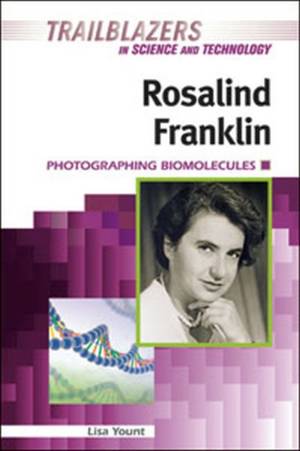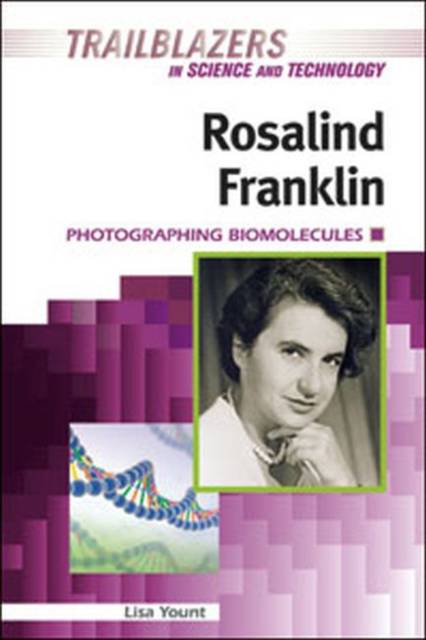
- Afhalen na 1 uur in een winkel met voorraad
- Gratis thuislevering in België vanaf € 30
- Ruim aanbod met 7 miljoen producten
- Afhalen na 1 uur in een winkel met voorraad
- Gratis thuislevering in België vanaf € 30
- Ruim aanbod met 7 miljoen producten
Zoeken
€ 53,45
+ 106 punten
Omschrijving
Growing up in the interwar period in London, Rosalind Franklin was determined to become a scientist, defying her father's wishes. After World War II, Franklin worked at the French government's central chemical research laboratory, where she learned X-ray crystallography. This technique relies on a beam of X-rays that passes through a crystal and strikes photographic film, letting a trained reader to see a three-dimensional arrangement of atoms. Her training in this field led to opportunities to photograph DNA, which allowed researchers to study in depth this complex molecule and to come to conclusions about its structure, including scientists James Watson and Francis Crick. Though Franklin proposed several conclusions similar to Watson and Crick's, Franklin was not sufficiently credited for her photographic work that led to their discovery. Rosalind Franklin delves into this woman's remarkable career and her contributions to the study of human biology.
Specificaties
Betrokkenen
- Auteur(s):
- Uitgeverij:
Inhoud
- Aantal bladzijden:
- 125
- Taal:
- Engels
- Reeks:
Eigenschappen
- Productcode (EAN):
- 9781604136609
- Verschijningsdatum:
- 1/10/2011
- Uitvoering:
- Hardcover
- Formaat:
- Ongenaaid / garenloos gebonden
- Afmetingen:
- 155 mm x 229 mm
- Gewicht:
- 385 g

Alleen bij Standaard Boekhandel
+ 106 punten op je klantenkaart van Standaard Boekhandel
Beoordelingen
We publiceren alleen reviews die voldoen aan de voorwaarden voor reviews. Bekijk onze voorwaarden voor reviews.











